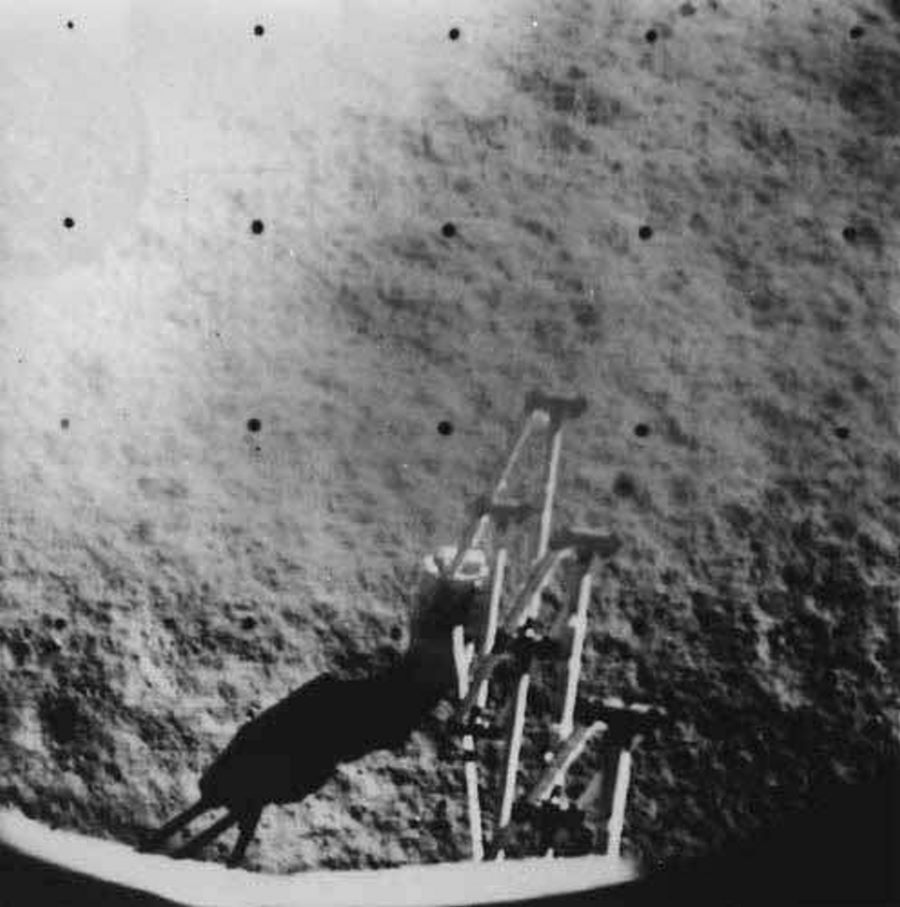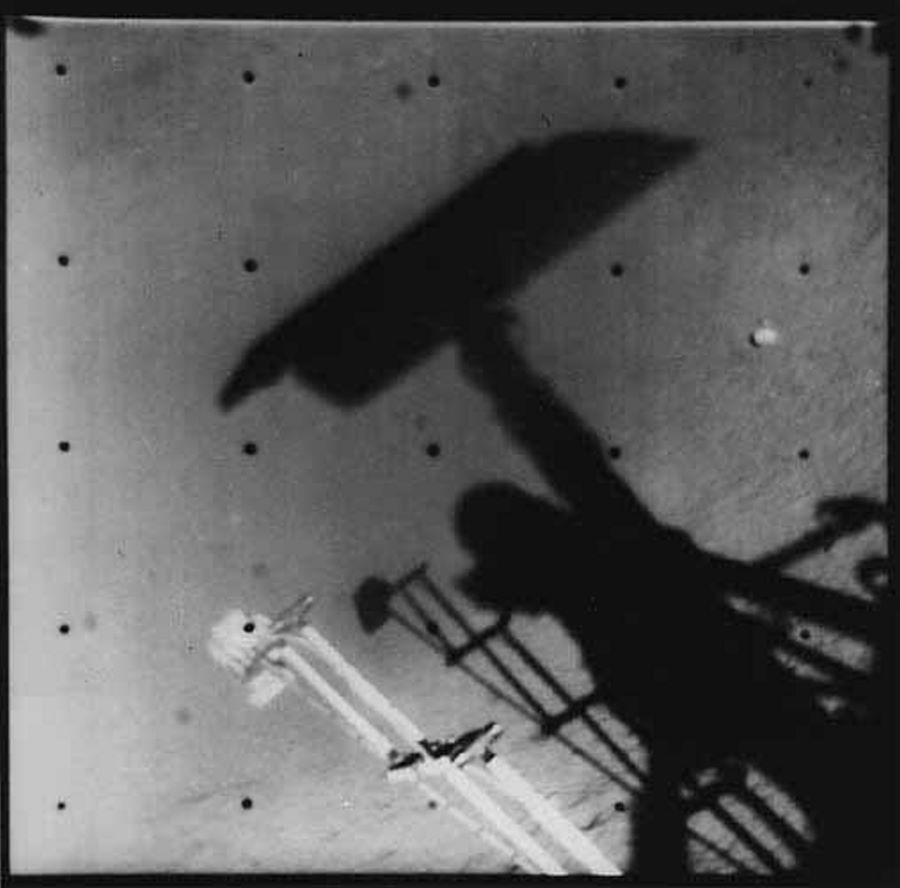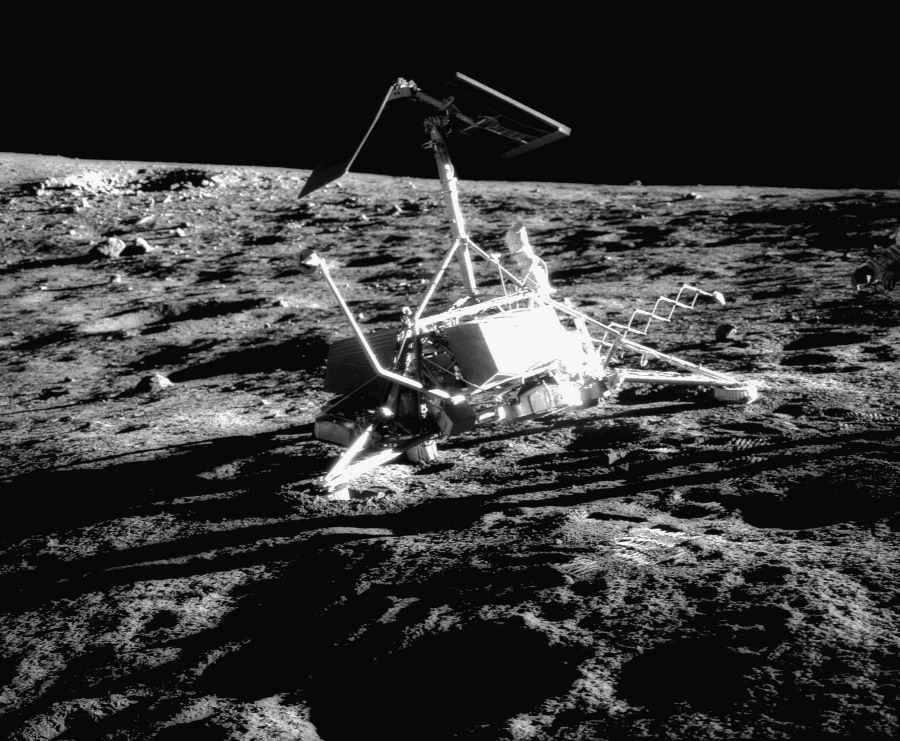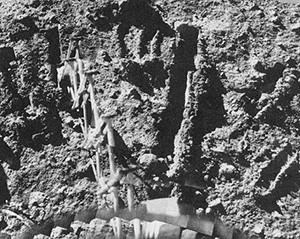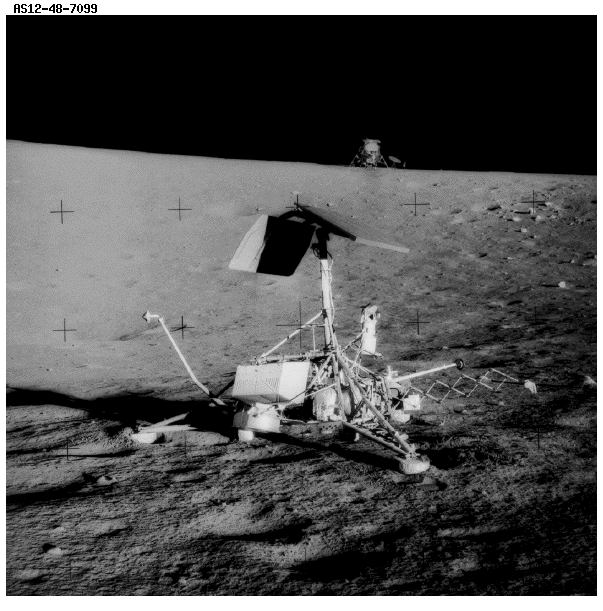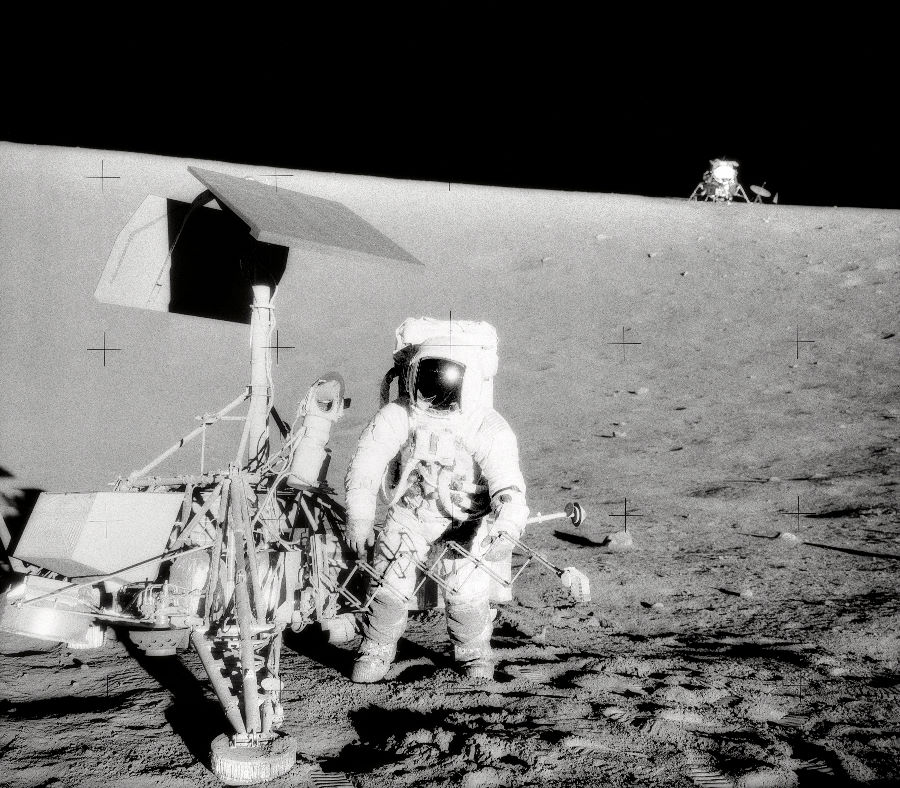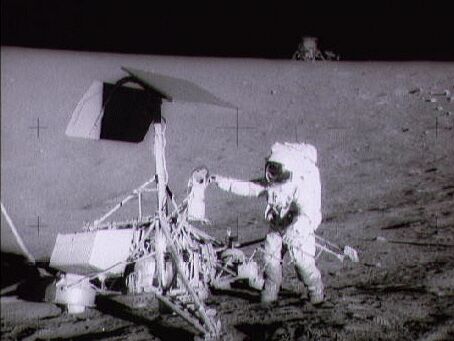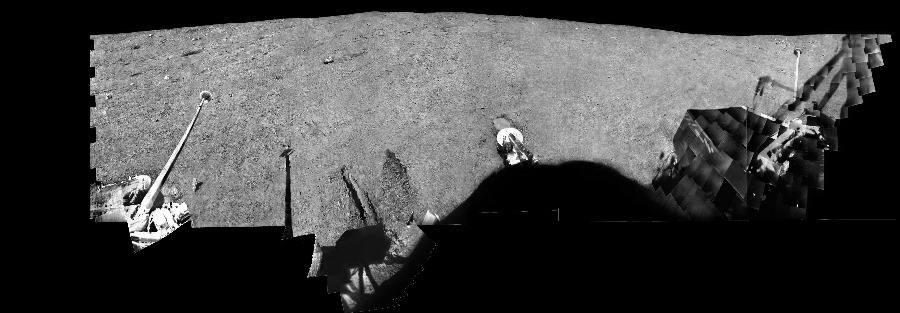|
|
|||||
|
....
SURVEYOR III - April 21, 1967 Surveyor III's surface sampler barely makes contact with lunar surface at first selected bearing point 67-H-469 ..
SURVEYOR III - April 26, 1967 View of Surveyor III's surface sampler from spacecraft's television camera 67-H-490 ..
SURVEYOR III - May 2, 1967 Late afternoon Sun on the Moon silhouettes the Surveyor III spacecraft against interior of the crater in which it landed 67-H-525 |
|||||
|
....
Surveyor 3 Organization NASA
Surveyor 3 was the third lander of the Surveyor program that explored the Moon. Launched on April 17, 1967, Surveyor 3 landed April 20, 1967 at the Mare Cognitium portion of the Oceanus Procellarum. A total of 6,315 images were transmitted to Earth. As it was landing, highly reflective rocks confused Surveyor 3's descent radar. The engines failed to cut off at 14 ft (4.3 m) as per the planned flight profile, causing the spacecraft to bounce twice.[1] The first bounce reached an altitude of 35 ft (10 m). The second bounce reached 11 ft (3 m). On the third impact—from an initial altitude of 11 feet (3 m) and velocity of zero which was under the original design target of 14 ft (4.3 m) slowly descending—the spacecraft settled in a soft landing per design intentions. This mission was the first carrying
a surface soil sampling scoop which can be seen on an extendable arm in
the images. This was mounted on a motor driven arm and used to dig four
trenches. The trenches were up to 7 in (180 mm) deep. Samples from the
trenches were placed in front of the spacecraft's television cameras for
image transmission back to Earth. When lunar nightfall came on May 3, 1967,
the spacecraft was shut down to preserve battery power; upon the next lunar
dawn (14 terrestrial days, or approximately 336 hours) the spacecraft could
not be reactivated.
This site was subsequently selected for the Apollo 12 manned lunar mission. Several components of the Surveyor were collected and returned to Earth for study of the long term exposure effects of the harsh lunar environment on human artifacts. It is widely claimed that a common bacterium, Streptococcus mitis, accidentally contaminated the spacecraft's camera prior to launch and survived dormant in this harsh environment for two and a half years, to be detected when Apollo 12 brought the camera back to Earth in 1969 [1]. This claim has been cited as providing credence to the idea of interplanetary panspermia, but more importantly, led NASA to adopt strict abiotic procedures for space probes to prevent contamination of Mars and other bodies suspected of having conditions suitable for life; most dramatically the Galileo spacecraft was deorbited to avoid impacting Europa. However, NASA officials now no longer support this claim (see Reports of Streptococcus mitis on the moon). Wikipedia - Surveyor 3
AS12-48-7099 ....
....
|
|||||
|
''
Mare Insularum, April 1967 As Surveyor 3 came in for a soft landing on the Moon, one of its thrusters didn't turn off at the proper time; as a result the spacecraft bounced several times before it came to rest at 3.01 S, 336.66 E. The last little bounce produced the imprint above the footpad in the center of this panorama. The first bounce was over the ridge and was not visible to Surveyor's camera. A scoop was used to scuff the soil -- the first use of a robotic arm on another world. The camera took more than 6,300 images. Unfortunately, the images were severely compromised by the presence of dust on the mirror. This panorama was scanned from a photographic print of a hand-assembled mosaic, then digitally reconstructed and cleaned of visual defects by Philip Stooke. Surveyor 3 Successful lunar lander (USA)
|
|||||
| FAIR USE NOTICE: This page contains copyrighted material the use of which has not been specifically authorized by the copyright owner. Pegasus Research Consortium distributes this material without profit to those who have expressed a prior interest in receiving the included information for research and educational purposes. We believe this constitutes a fair use of any such copyrighted material as provided for in 17 U.S.C § 107. If you wish to use copyrighted material from this site for purposes of your own that go beyond fair use, you must obtain permission from the copyright owner. | |||||
|
|
